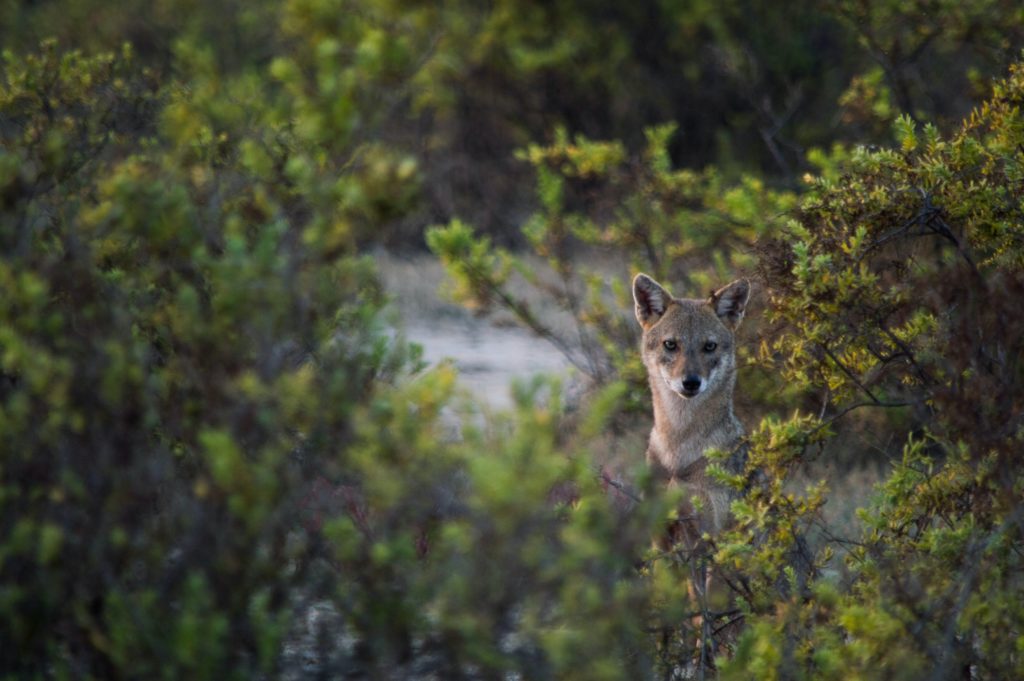Conservation through nutrition?

What will food and the presence of wolves have to do with it? Well a priori it is logical to think that if the wolves do not have food they will not be there. The problem is that there are animals that eat almost everything (generalists) but there are others that only eat very few things (specialists). In this case imagine how difficult it is for an animal to exist if it is not it’s only food. I give you the example of the Iberian lynx (the most threatened feline in the world). It is estimated that 96% of the food of the Iberian lynx is rabbits. Can we have lynxes if we don’t have rabbits? Well, hardly. Then to conserve lynxes it will be mandatory to conserve their food (Conservation through nutrition). But we can go further.
If now we want to conserve rabbits (Although it should not only be done by lynxes) we have to think … What does it take for there to be rabbits? We have a very wrong idea because we think that rabbits need “anything to live” (I encourage you to take a look at this article). However, it has been proven that on many occasions one of the limiting factors is nutrition. Wow! If I want there to be lynxes, there must be rabbits, and if I want there to be rabbits, I will have to ask myself what they need to eat. Another example of conservation through nutrition. This is our main line of work where we try to know the feeding of these animals to apply it to conservation programs. I encourage you to contact us if you have any questions!

What will food and the presence of wolves have to do with it? Well a priori it is logical to think that if the wolves do not have food they will not be there. The problem is that there are animals that eat almost everything (generalists) but there are others that only eat very few things (specialists). In this case imagine how difficult it is for an animal to exist if it is not it’s only food. I give you the example of the Iberian lynx (the most threatened feline in the world). It is estimated that 96% of the food of the Iberian lynx is rabbits. Can we have lynxes if we don’t have rabbits? Well, hardly. Then to conserve lynxes it will be mandatory to conserve their food (Conservation through nutrition). But we can go further.
If now we want to conserve rabbits (Although it should not only be done by lynxes) we have to think … What does it take for there to be rabbits? We
have a very wrong idea because we think that rabbits need “anything to live” (I encourage you to take a look at this article). However, it has been proven that on many occasions one of the limiting factors is nutrition. Wow! If I want there to be lynxes, there must be rabbits, and if I want there to be rabbits, I will have to ask myself what they need to eat. Another example of conservation through nutrition. This is our main line of work where we try to know the feeding of these animals to apply it to conservation programs. I encourage you to contact us if you have any questions!

What will food and the presence of wolves have to do with it? Well a priori it is logical to think that if the wolves do not have food they will not be there. The problem is that there are animals that eat almost everything (generalists) but there are others that only eat very few things (specialists). In this case imagine how difficult it is for an animal to exist if it is not it’s only food. I give you the example of the Iberian lynx (the most threatened feline in
the world). It is estimated that 96% of the food of the Iberian lynx is rabbits. Can we have lynxes if we don’t have rabbits? Well, hardly. Then to conserve lynxes it will be mandatory to conserve their food (Conservation through nutrition). But we can go further.
If now we want to conserve rabbits (Although it should not only be done by lynxes) we have to think … What does it take for there to be rabbits? We
have a very wrong idea because we think that rabbits need “anything to live” (I encourage you to take a look at this article). However, it has been proven that on many occasions one of the limiting factors is nutrition. Wow! If I want there to be lynxes, there must be rabbits, and if I want there to be rabbits, I will have to ask myself what they need to eat. Another example of conservation through nutrition. This is our main line of work where we try to know the feeding of these animals to apply it to conservation programs. I encourage you to contact us if you have any questions!
Published by:
PabloJesúsMarínGarcía
